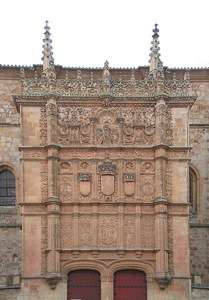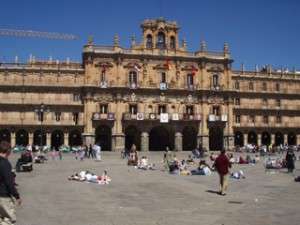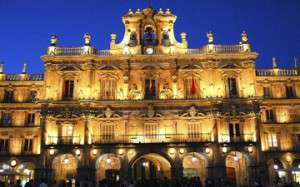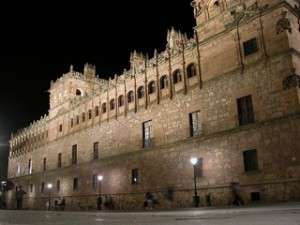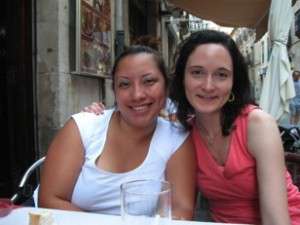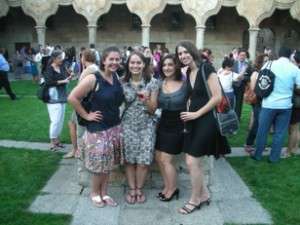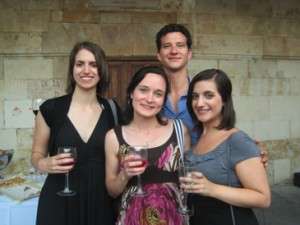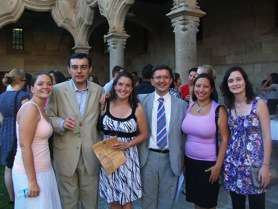Summer Study Abroad in Salamanca
Founded in 1218, the prestigious University of Salamanca is one of the three oldest universities in the world. Throughout the centuries, Salamanca has attracted to its classrooms the greatest minds of the ages, including Miguel de Cervantes, the author of Don Quijote. Today the university annually enrolls more than 30,000 students and awards more than 200 doctoral degrees. UMBC is one of a select group of American universities that has entered into a closed-consortium agreement with the University of Salamanca. Our Master-level graduate students take courses in Salamanca especially tailored to the needs of the American high school teacher. In addition, they live in an ancient city known worldwide for its breathtaking monumental heritage, which includes examples from many different artistic periods. Salamanca was declared a “World Heritage City” by the UNESCO and it was named “European Cultural Capital” for the year 2002 by the EU. The Director of UMBC’s Summer Salamanca Program, Professor Alan Bell, has many years of experience with the high quality coursework offered by this renowned Spanish university. For more information, please contact Dr. Ana Maria Schwartz Caballero.
Fachada (Facade) de la Universidad Antigua
La Plaza Mayor (Main Square) by day
La Plaza Mayor (Main Square) by night
El Palacio (Palace) de Monterrey
Student Testimonies
Claudia Tonguino and Gail Love Zik
“I am looking forward to applying what I have learned during my time abroad to my future INCC classes at UMBC and in my classes as a high school world language teacher.” Gail Love Zik, Alumna, MA in Intercultural Communication
Deanna Cerquetti and Brenna Spickler with new friends
“The major thing I took away from my time in Spain– long-lasting bonds with people that I hadn’t known before.” Brenna Spickler, Alumna, BA/MA t in Intercultural Communication
Gail Love, Sherri McCusker, and Claudia Tonguino
“The professors not only taught us Spanish, but got to know us personally and answered our questions about daily life in Spain and helped us understand what is important to Spaniards. They helped us understand why and how historical events have helped shape who Spaniards are today. Also, they were very patient when we were learning grammatical structures of Spanish used primarily in Spain, since a majority of the class is more accustomed to Spanish grammar and syntax from Latin America. Sometimes the difference in vocabulary words really made for some comical moments in class. There were less intercultural experiences in the dorms, because we lived in individual rooms. But many students who chose to live with families experienced first-hand, everyday, Spanish culture, for better or for worse. Some students claimed that their host family was not a good fit for them, while others thoroughly enjoyed the experience. Either way, students living with families had to discover different routes (and sometimes walk a lot further) to get to class everyday, and they had to learn polite ways to say “no, thank you” whenever their host families tried to feed them more food! Living with a host family meant learning to always wear shoes around the house, take shorter showers, and re-think how often laundry needed to be done.” Gail Love Zik, Alumna, MA student in Intercultural Communication
